03. Pseudocode
Pseudocode
Process and Implementation
As an accompaniment to the videos we will follow the particle filter algorithm process and
implementation details.
Particle Filter Algorithm Steps and Inputs
The flowchart below represents the steps of the particle filter algorithm as well as its inputs.
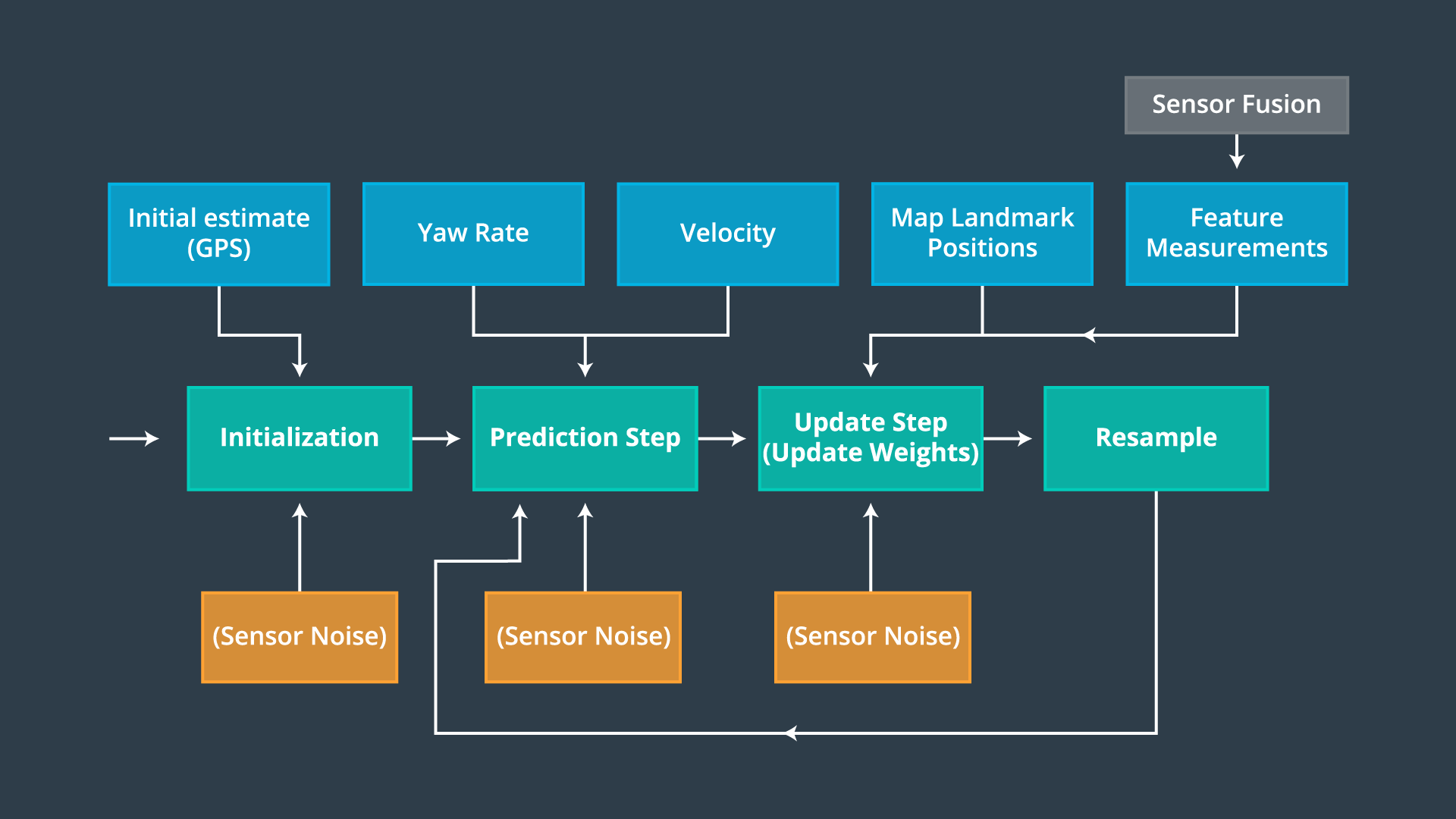
Particle Filter Algorithm Flowchart
Psuedo Code
This is an outline of steps you will need to take with your code in order to implement
a particle filter for localizing an autonomous vehicle. The pseudo code steps correspond to the steps in the algorithm flow chart, initialization, prediction, particle weight updates, and resampling. Python implementation of these steps was covered in the previous lesson.
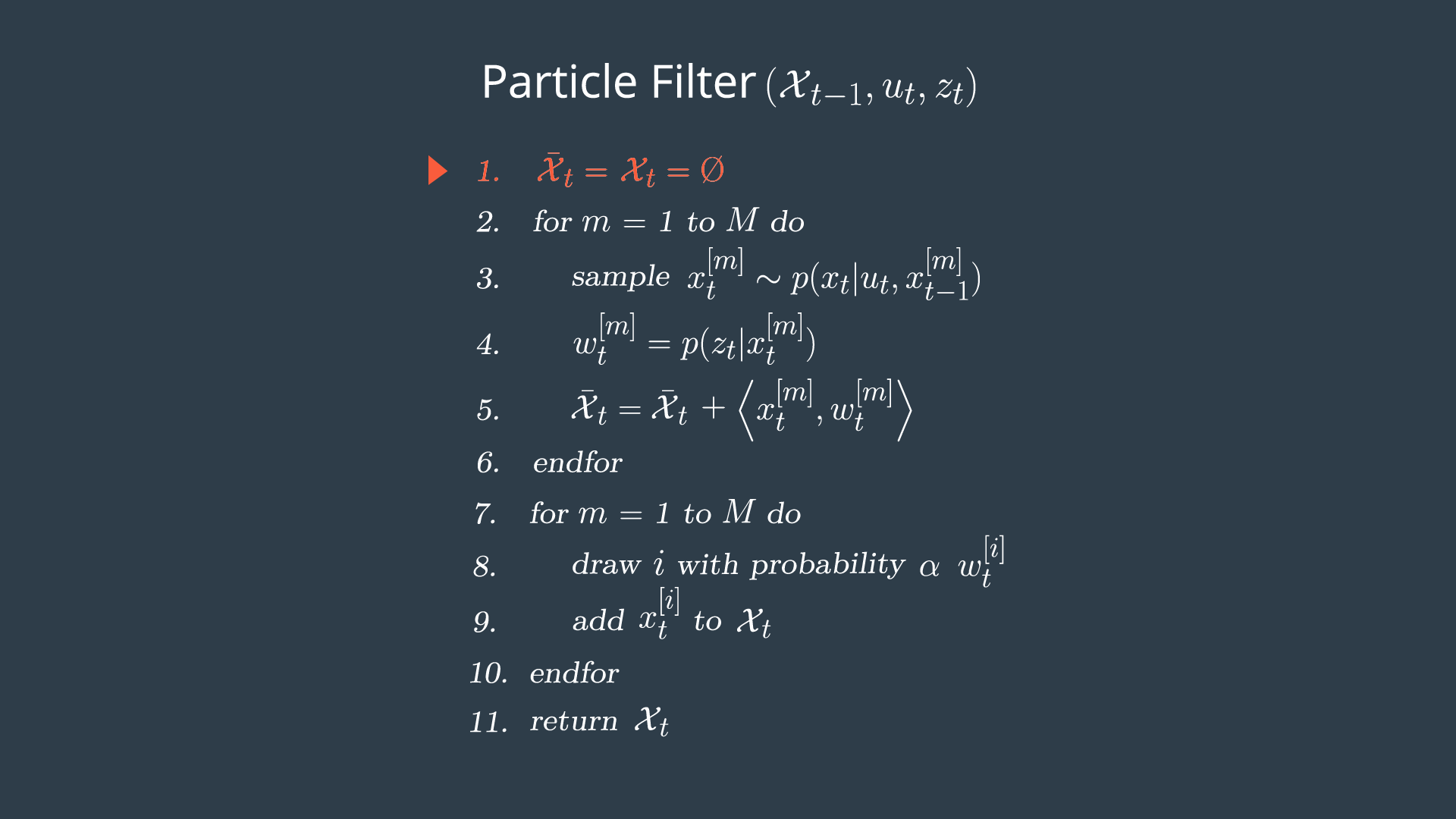
Initialization
At the initialization step we estimate our position from GPS input. The subsequent steps in the process will refine this estimate to localize our vehicle.
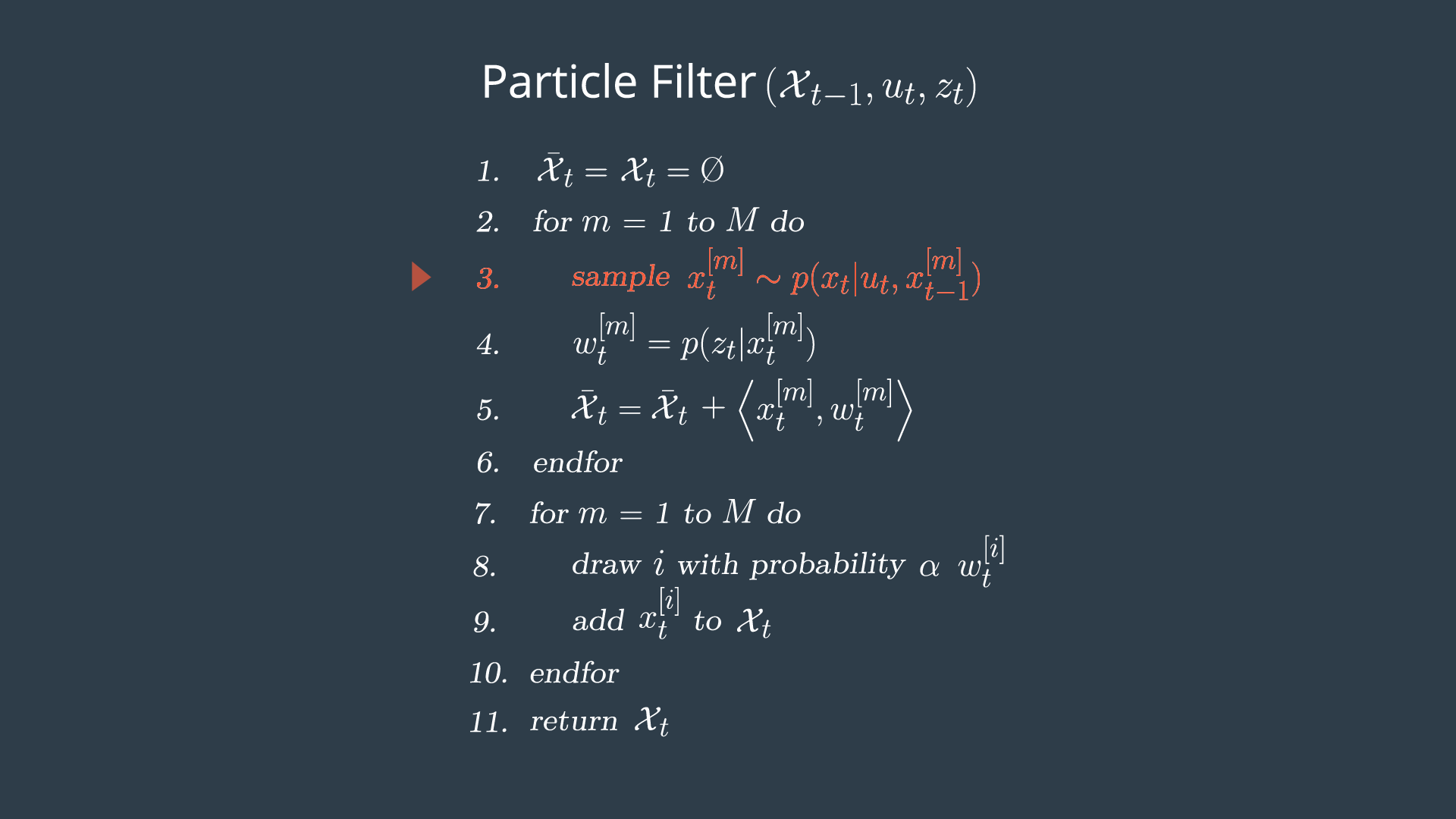
Prediction
During the prediction step we add the control input (yaw rate & velocity) for all particles
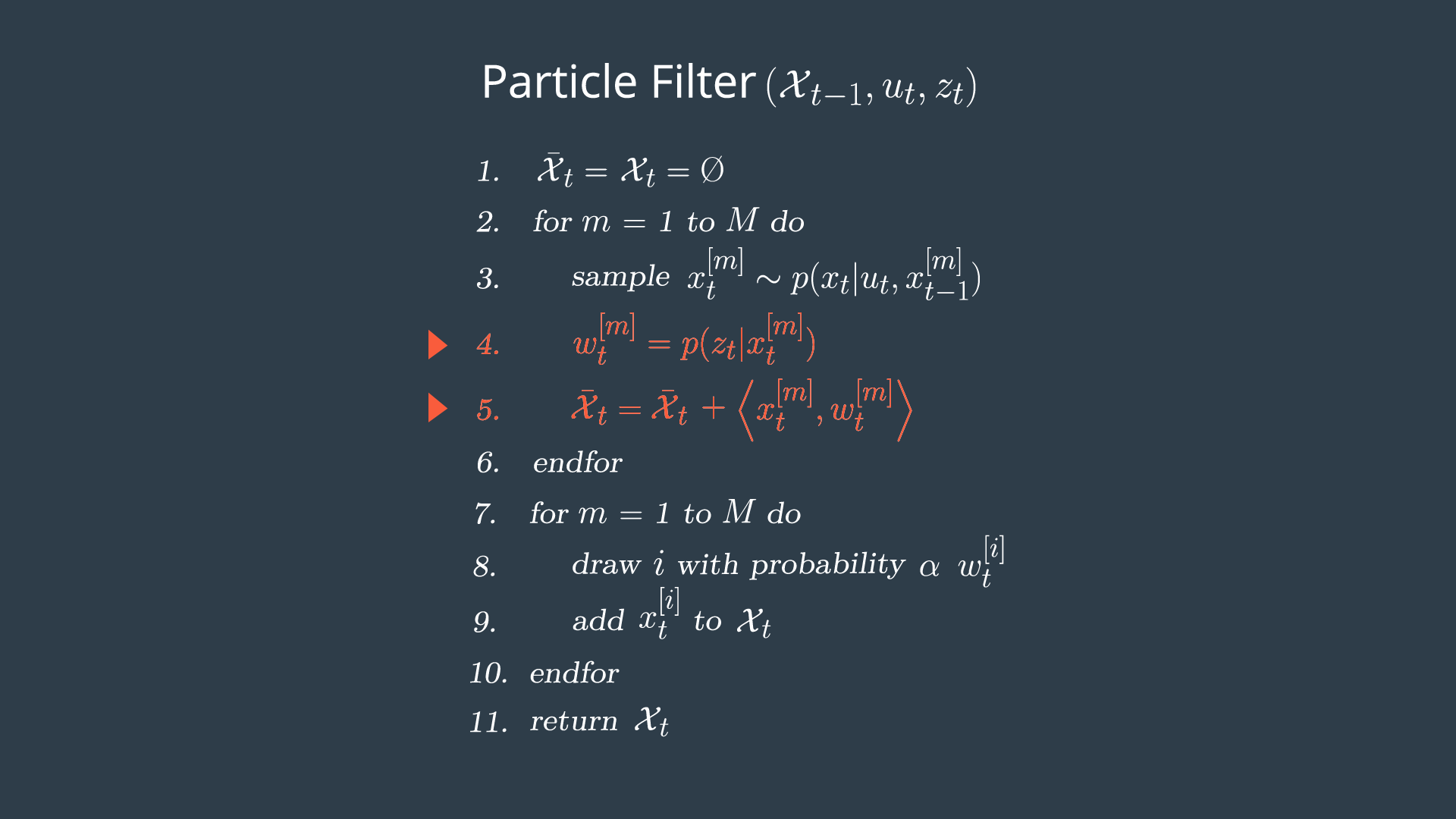
Update
During the update step, we update our particle weights using map landmark positions and feature measurements.
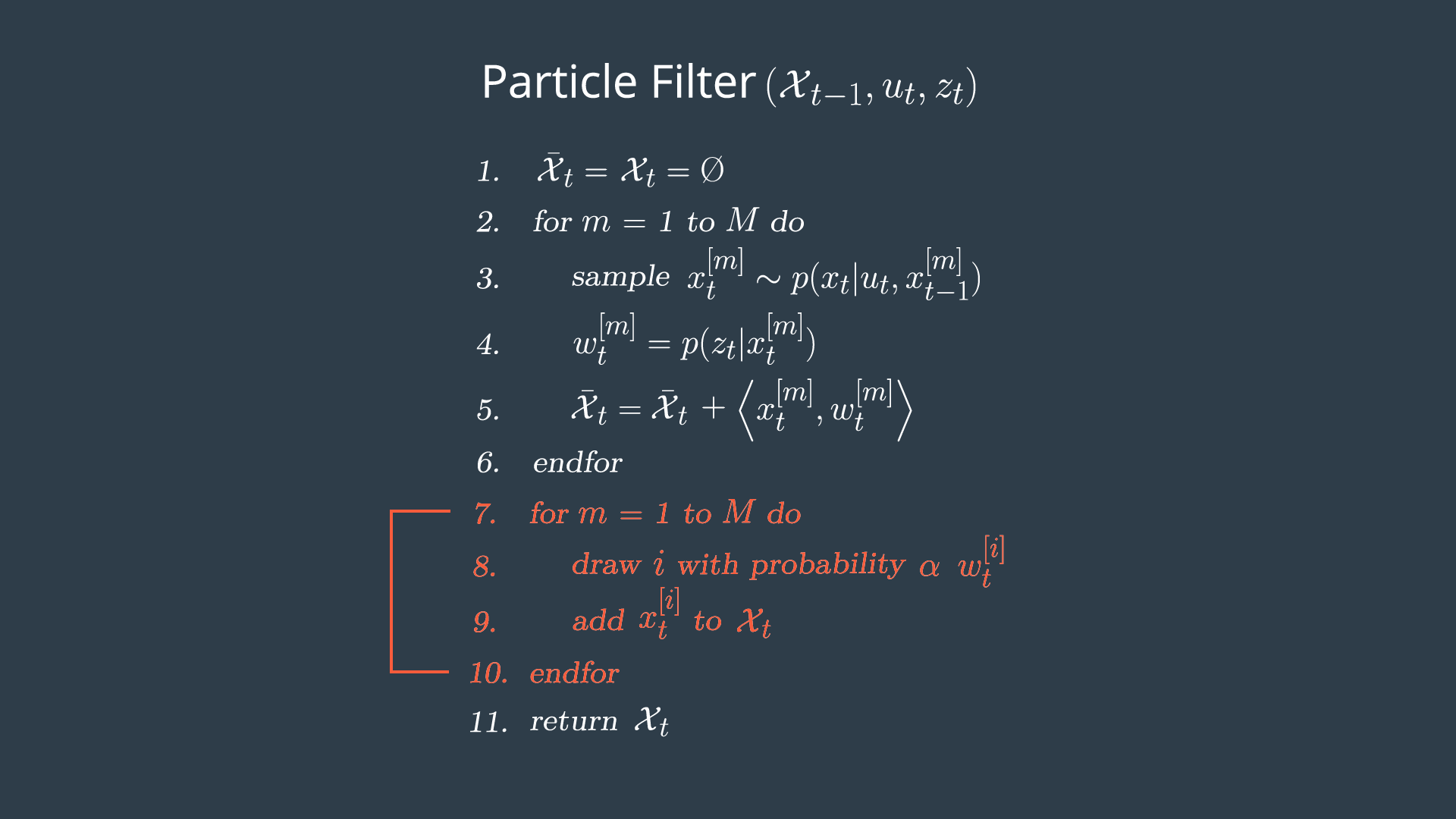
Resampling
During resampling we will resample M times (M is range of 0 to length_of_particleArray) drawing a particle i (i is the particle index) proportional to its weight . Sebastian covered one implementation of this in his discussion and implementation of a resampling wheel .
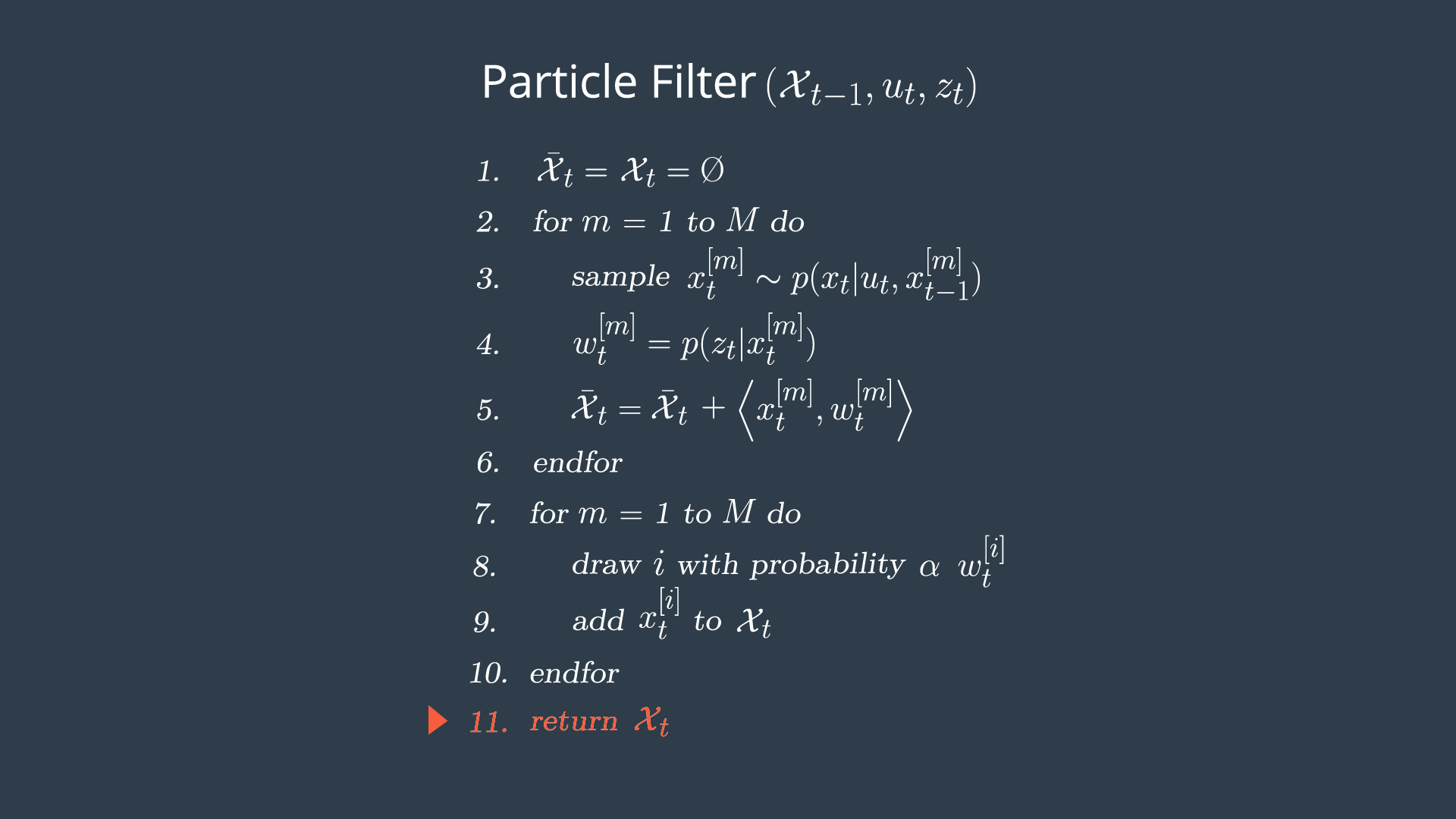
Return New Particle Set
The new set of particles represents the Bayes filter posterior probability. We now have a refined estimate of the vehicles position based on input evidence.